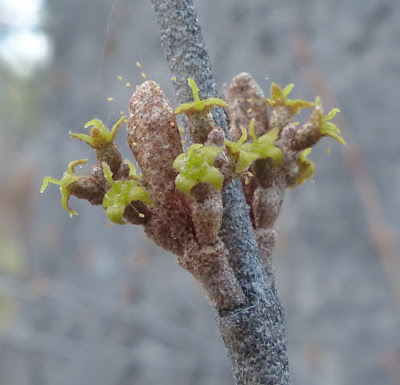This story appeared first in Alaska Women Speak journal 24(3):11. Fall 2016 (www.alaskawomenspeak.org) and is reprinted by permission of the author. Marta lives and writes from a small village located in the southern portion of Alaska’s Alexander Archipelago. She owns a salmon cannery with her son and shares her. home with a Pomeranian and a tabby cat.
Red huckleberries sparkle through the deep woods in glints of orange and near-red. As rain forest understory plants, they scramble under the great coniferous trees of the Tongass. In spring, the plants are covered in light gold to pale pink blossoms. The young berries shine with the pale orange of a rain forest sunset in May.
When they’re at their peak of ripeness, the berries are the color of sockeye eggs. Red huckleberries are feral plants that don’t respond well to attempts at commercial cultivation, though Indigenous peoples have long used them for a variety of purposes. They can be eaten fresh, dried, preserved, fermented, made into syrups and sauces, or combined with salmon eggs and seal oil to create a delicacy for winter feasts. They’re sometimes used as bait in place of salmon eggs.
Red huckleberries are tart. Some people find them too tangy to be eaten raw, while others love the way they pop right inside their mouths with little explosions of juice. They get their tang from the highly acidic, rich rain forest soils in which they thrive. As with all berries, they become sweeter with age, so if you don’t like the acid tang, look for the larger berries that are more red than orange.
Get the berries in the middle of the summer from the woods. If you follow a small salmon spawning creek long enough, you’ll come to a patch of red huckleberries. Be sure to go with friends, and sing your songs and tell your stories to let the bears know you’re there so they can sink into the woods. Bring the berries home and roll them through your hands on a flat surface to remove the stems, and shake them in a sieve so the stems fall through.
The red huckleberries were ripe this year just when the fi.reweed was at its brightest. Fireweed grows in meadows around the edges of the forest, by the side of the road, and generally everywhere and anywhere where there’s an extra patch of dirt that’s not already being used, as long as it gets a reasonable amount of sun. Beekeepers meadows to get delicate fireweed honey. Beekeepers often place hives in the middle of vast fireweed meadows to get delicate fireweed honey.
Even though you won’t find fireweed growing in the deep forest alongside the wild red huckleberries, the two combine to create a flavor palette that captures the taste of the Tongass. Fireweed honey is soft and sweet, providing the perfect foil for the impudent tang of the red huckleberries. You can mix red huckleberries with fireweed honey to make syrup for pancakes, French toast, to use as ice cream toppings or to make craft cocktails .
. . . a flavor palette that captures the taste of the Tongass.
First, heat the berries over a low flame with a little water. The berries need to soften so they can be properly mashed, and then strain them for the juice. Add fi.reweed honey to the juice, bring to a boil, and simmer until reduced by about half or when the mixture begins to stick to a wooden spoon.
If your berries came from a patch growing on and near rotting logs, their acidic bite may be more pronounced, so you’ll need to add more honey. The same thing applies if you were impatient for your huckleberries and picked them before they were quite ripe. Keep adding honey a little at a time until you find your personal sweet spot. Some people like to add a squeeze or two of fresh lemon juice, but a bit of orange juice actually works better with this particular flavor profile because it’s not so tart. You might think about a fast dash of cinnamon and teardrop-sized splash of real vanilla
The syrup can be used right away, but letting it sit for a week or tvvo ensures that the flavors mix and settle. Even though you might be tempted to use it all, try to save some for late fall and winter when the storms are at their worst and the days are dark and gloomy. Few things are better the morning after a Southeastern Alaska storm than sourdough pancakes drizzled with a taste of the Tongass summer.


